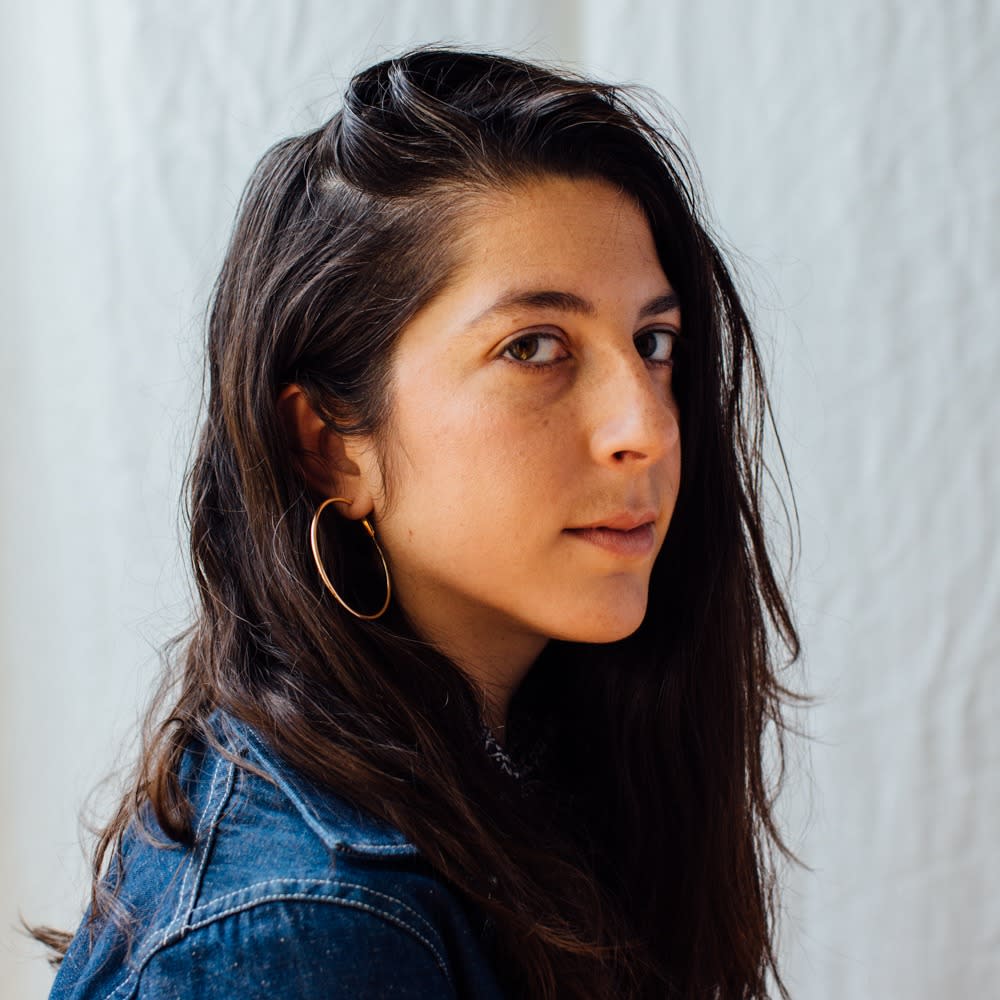Michael Protas started farming during college, where he was studying film, because he wanted to learn what it meant to work hard. He didn’t expect to fall in love with it. But when he followed his then-girlfriend (now wife) to New York to work in film, he missed working on the land. He realized he wanted a different life.
“It spoke to me,” he says. “Who do you want to be when you’re older? Farming can be horrifying. You don’t get paid well, and it’s a lot of hard work outside. But as a whole it’s the best job. When you sit back and think about a season done, you feel a very large sense of accomplishment and reward.”

Today, Mike runs One Acre Farm, which actually supports 34 acres of naturally grown produce just outside of Washington, DC. After 10 years of renting, he bought the land outright in 2017. A year later, Charlotte Henderson joined his team and quickly took over One Acre’s CSA program. Now the two work together to grow and distribute healthy, delicious food for their community of members.
To learn more, we asked Mike and Charlotte all about their approach, learnings, and vision for the future — read on to get to know them.
Mike, you’ve been running CSAs for over a decade. What do you like about that aspect of farming?
Mike: If I were to grow only three things to sell at the market, I would have to make so many bad decisions for the environment and for the people that work here to make those three things succeed. A CSA is so good because we have the money up front, and because we’re honest people, and because we’re growing a diverse amount of things — we can respect the people that work here, the planet that we live on, and the members that support us. I don’t know of another model that would do those things.
Charlotte: [With a CSA] you receive a bag every week. You could try to break down that bag and each of those vegetables into monetary value... but you can’t do that, because the price members pay for that bag is not only for the vegetables but also for the wetlands we’re preserving, for letting soil rest, and for the cover crops we plant. There’s all these externalities that are accounted for in our CSA model that we try really hard to convey to people.
What are some of the challenges of running a CSA? Any learnings or surprises?
Mike: Syms had that tagline: “An educated customer is our best customer.” Our goal is to educate people. Even if they do a CSA share for one year, they have learned something and grown as a human being.
Charlotte: Even if it’s as simple as, tomatoes don’t grow all year! Mike has been good about teaching me that, OK, so we have 175 members. One week I get one email that says, our eggplant was discolored. I fall into this spiral: we’re doing everything wrong! But I’ve learned that you shouldn’t obsess over it.
Mike: Another thing is finding a negative and turning it into — horrifying phrase — a “teachable moment.” Use this as an opportunity to educate them about why it might have been discolored or why we thought it was good.
Charlotte: We try to convey that we’re not Amazon. We’re two people running this thing, and we have five more on staff who are the most hardworking people you’ll ever meet. (We’re not required to pay minimum wage, but the lowest we pay is true minimum wage for our county, $15 an hour.) Our whole mission is to make this a wonderful experience for our members. They can come to us, talk to us, ask us questions. That’s part of creating a relationship with our members.

Speaking of relationship building, you started One Acre to create a community where people feel connected to the land and crops. Why was that important to you?
Mike: One nice thing about the old farm that I worked at was that everybody came the same day at the same time from far away to pick up their vegetables. There was a coordinator, and I watched her develop a really amazing relationship with members. That was one aspect I wanted to emulate. The problems [now] are logistics and time and schedules. But we have a fall farm party and a spring farm tour — I try to engage people to come out with a few activities a year, with people getting together and seeing the same faces year after year.
Charlotte: I write a newsletter every week that goes out to our members. I always share something about the farm, because that’s why people join a CSA.
Mike: My cousin was here at some farm event in the spring, and he mentioned, “There are probably 100 people here and not one person is on their phone.” Everybody was, for once, just enjoying themselves with other people.

Sustainability is at the forefront of your techniques and practices. Tell me about your approach and how it impacts the food you grow.
Mike: If you have a variety of broccoli, a lot has to do with give and take — it may store well and ship well, but might not store nutrients well or be as tasty. Because of the local aspect, we’re able to source from seed companies with varieties designed to be healthier, tastier, and unique.
Charlotte: You taste a tomato from our farm and one from the supermarket, and it’s totally different. We pick either the day before or day of when the produce is distributed, so it’s extremely fresh. And because we’re growing using high environmental standards, the nutrient quality is really the best you can get.
Mike: When you grow something organically, the concept is, how do you feed the soil to feed the healthiest crop. With conventional, the general rule of thumb is, what do we need to feed the plant so it grows as fast and as big as possible? It’s like when you feed kids sugar, they get a lot of energy, but you’re just feeding the beast, not the human. If you give a kid something healthy, they’ll have sustained nutrition. A sustainable model is a smarter way to farm because you are creating a plant that is defending itself.
Charlotte: Healthy soil, healthy plants, healthy people.

What are you growing this fall that you’re excited about, and why?
Charlotte: Honeynut squash is a new variety that came out of Cornell a couple of years ago, and it’s a miniature butternut squash, but the skin is delicate. They’re extremely sweet and really good. I tell people to roast them and slap some butter on them.
Mike: There’s a type of cauliflower called romanesco. I love growing them, but that is something you cannot ship. The problem is, I like it, but nobody else likes it.
Charlotte: What are you talking about? I’ve told you so many times that people like it.
Mike: They do? Nevermind. Are we growing it this year?
Charlotte: No, because you didn’t want to! [Laughs] We also grow all year now, so fall crops have taken on a whole new importance.
Mike: They have to last us through the winter.
Any favorite things you make? Your website referenced a collards pie.
Charlotte: It was recommended to me by a CSA member, and it was the best thing I had all year. She has four boys and was still able to make something really tasty, and her kids ate all these greens.
Mike: She joined as a member the first year and started getting pregnant and was like, “I can’t do this anymore.”She said, “I promise I’ll be back one day.” And a decade later she finally came back.
Charlotte: Members will bring their kids to pick up, and they’ll say, this is so-and-so and he or she has grown up on your vegetables. It’s like, oh my God!
What’s in store for the future of One Acre Farm?
Charlotte: Last year there were a lot of grants, so we were awarded some and were able to build two high tunnels. We’ve been able to expand to year-round production.
Mike: We’ve never done any perennials, like fruit trees or berries. That would be the next round to start thinking about. [Now that we have Charlotte,] we’re year-round. Before, a CSA, to me, was kind of like a luxury, a quaint thing for people to do — get your vegetables for a few months and go away.
Charlotte: People can start depending on us more. We’re sourcing their food. There’s even more of a connection to the farm for people when they join — it becomes part of their rhythm.


















.svg)




.svg)
.svg)








.png)







.webp)










